How to Train Clients With Lung Disease (Step-by-Step Guide)
Learning how to train clients with lung disease can expand your personal training business to new horizons. However, it’s vital to be equipped with the appropriate knowledge and tools to train these clients effectively and safely. Incorporating certain personal training software features can aid in this process. Discover how to train clients with lung disease and learn about the necessary tools in this comprehensive guide.
- Training clients with lung disease involves careful planning and modifications, as exercise programs should cater to their abilities and not put undue stress on their respiratory system.
- Most clients with lung disease will benefit from low-to-moderate intensity cardiorespiratory exercises, combined with strength training, while breathing techniques should also be incorporated.
- Utilizing workout and assessment software can help safeguard your client’s safety and assist them in reaching their fitness goals with fewer disruptions.
Entering into the realm of training special populations, like clients with lung disease, can provide personal trainers a fulfilling way to diversify their fitness business.
To train clients with lung disease, it’s crucial to have a thorough understanding of the condition, along with the right tools to facilitate effective training; this is where personal training software proves valuable. By harnessing the features that the best online personal training software offers, you can train clients with lung disease in a manner that is tailored to their unique needs, not against them.
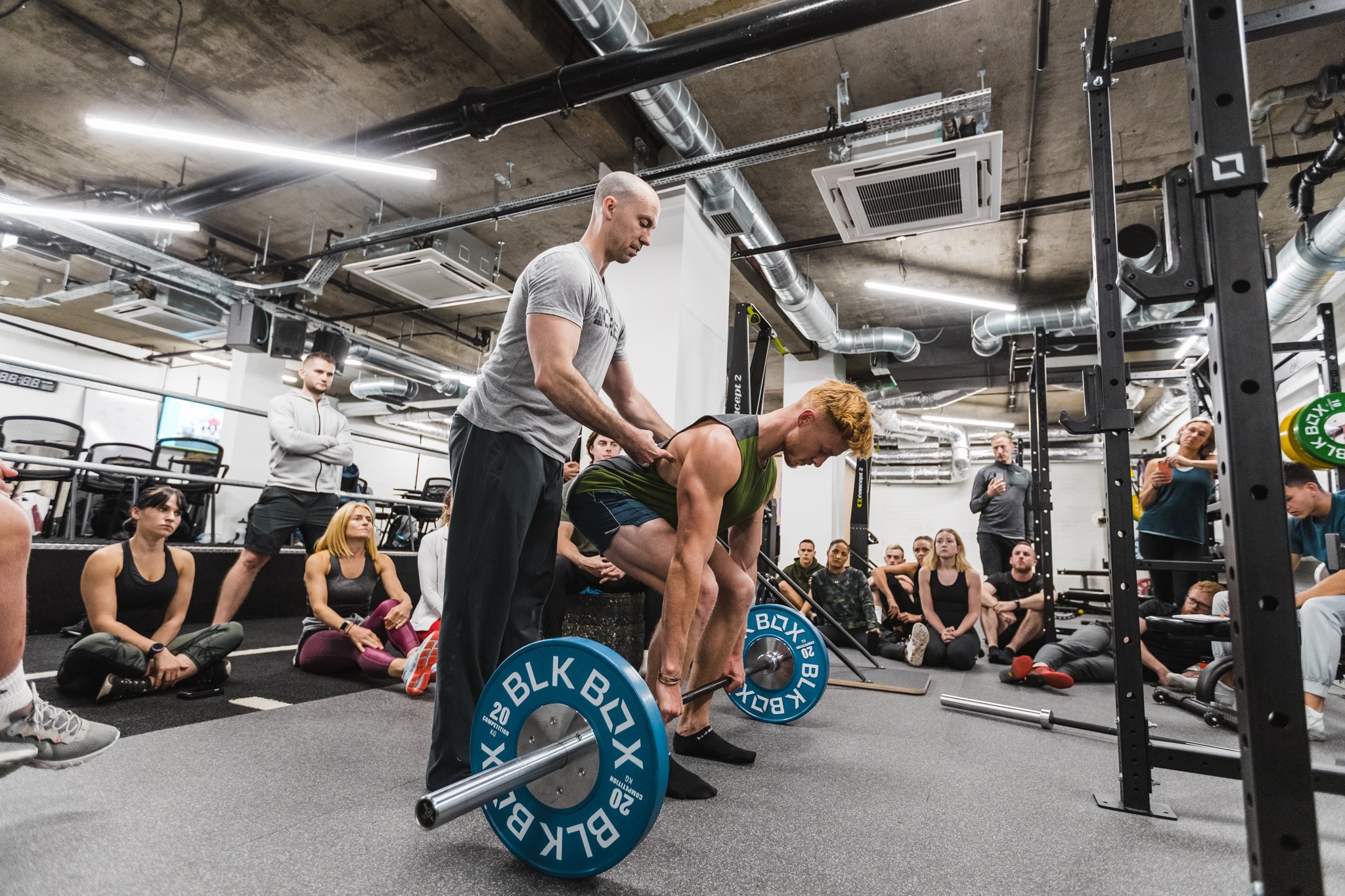
Experience the leading personal training software from Exercise.com by scheduling a demo today!
Understanding Lung Diseases and their Impact on Exercise
Living with lung disease can be challenging, but it doesn’t mean that exercise is off-limits. In fact, exercise can play a crucial role in managing lung disease and improving overall quality of life. As a fitness professional, it’s important to understand the different types of lung diseases and their impact on exercise, as well as the importance of exercise for clients with lung disease.
Lung diseases encompass a wide range of conditions, including chronic obstructive pulmonary disease (COPD), asthma, pulmonary fibrosis, and bronchiectasis. Each of these conditions affects the lungs in different ways, leading to symptoms such as shortness of breath, wheezing, and coughing.
When it comes to exercise, clients with lung disease may struggle with reduced lung capacity and difficulty exchanging gases during physical exertion. This can make it challenging for them to participate in activities that require cardiovascular endurance or strength.
However, with the right guidance and precautions, clients with lung disease can still benefit from regular exercise and improve their overall fitness and well-being.
One important consideration when designing an exercise program for clients with lung disease is to focus on activities that promote lung function and respiratory muscle strength. Breathing exercises, such as pursed lip breathing and diaphragmatic breathing, can help improve lung capacity and control breathing patterns. These exercises can be incorporated into a warm-up or cool-down routine to enhance the effectiveness of the workout.
In addition to specific breathing exercises, it is also crucial to monitor the intensity of the exercise and provide adequate rest periods. High-intensity activities may cause excessive shortness of breath and fatigue, so it is important to start with low-impact exercises and gradually increase the intensity as tolerated. Regular breaks during the workout can help clients with lung disease recover and prevent overexertion.
The Importance of Exercise for Clients with Lung Disease
Regular exercise for clients with lung disease offers numerous benefits. It can help improve lung function, increase cardiovascular endurance, strengthen muscles, and enhance overall physical and mental well-being.
Exercise also plays a crucial role in reducing symptoms such as shortness of breath and improving the ability to perform daily activities. Moreover, staying physically active can help reduce the risk of complications and hospitalizations related to lung disease.
As a fitness professional, it is essential to communicate these benefits to your clients and emphasize the importance of exercise in their treatment plan for lung disease.
Furthermore, exercise can also help clients with lung disease manage their weight and improve their quality of life. Regular physical activity can aid in weight management by burning calories and increasing metabolism. Maintaining a healthy weight is important for individuals with lung disease as excess weight can put additional strain on the respiratory system.
Assessing the Fitness Level and Health History of Clients with Lung Disease
Before designing an exercise program for clients with lung disease, it’s crucial to assess their fitness level and review their health history. This assessment should include a complete medical history, lung function tests, and a thorough physical examination.
Understanding your clients’ baseline fitness level and any limitations they may have due to their lung condition will help you develop a customized exercise plan that is safe, effective, and achievable for them.
In addition to assessing their fitness level and health history, it is also important to consider any specific symptoms or complications related to their lung disease. This may include evaluating their oxygen saturation levels, assessing their ability to perform daily activities without experiencing shortness of breath, and monitoring any exacerbations or flare-ups of their condition.
Creating a Customized Exercise Plan for Clients with Lung Disease
When designing an exercise plan for clients with lung disease, it’s important to consider their goals, preferences, and current fitness level. The exercise plan should include a combination of cardiovascular training, strength training, and flexibility exercises.
Cardiovascular exercises such as walking, cycling, and swimming can help improve lung function, increase endurance, and enhance overall cardiovascular health. Strength training exercises targeting major muscle groups can also help improve respiratory muscle strength and overall functional capacity.
Incorporating flexibility exercises such as stretching and yoga can improve posture, lung capacity, and overall relaxation.
It’s essential to progress the exercise program gradually, considering the comfort level and response of each individual client. Regular reassessment and adjustments to the exercise plan may be necessary as clients progress and their lung condition changes.
Additionally, it is important to educate clients with lung disease about proper breathing techniques during exercise. Teaching them how to breathe deeply and efficiently can help optimize oxygen intake and reduce shortness of breath. Encouraging clients to practice diaphragmatic breathing and pursed-lip breathing techniques can be beneficial in managing their lung condition during physical activity.
Breathing Techniques and Modifications for Clients with Lung Disease
For clients with lung disease, proper breathing techniques are crucial during exercise to prevent or alleviate symptoms such as shortness of breath. Encourage your clients to practice diaphragmatic or belly breathing, which involves deep inhalation and exhalation using the diaphragm.
Moreover, teaching clients to pace themselves and emphasize proper breathing patterns during exercise can help maintain endurance and control symptoms. Providing frequent breaks and allowing for longer recovery periods between sets or activities can also be beneficial.
Additionally, clients may benefit from using supplemental oxygen during exercise. Collaborating with their healthcare team to determine the appropriate oxygen flow rate and when it is necessary can further enhance safety and effectiveness during workouts.
Furthermore, it is important to educate clients with lung disease about the potential triggers that can worsen their symptoms during exercise. These triggers may include cold air, high humidity, air pollution, or allergens. Encourage clients to avoid exercising outdoors during extreme weather conditions or in areas with poor air quality. Indoor exercise options, such as using a treadmill or stationary bike, can provide a controlled environment and minimize exposure to these triggers.
In addition to breathing techniques and modifications, incorporating exercises that specifically target the respiratory muscles can be beneficial for clients with lung disease. These exercises can help improve lung function, increase respiratory muscle strength, and enhance overall breathing capacity. Examples of respiratory muscle training exercises include pursed lip breathing, inspiratory muscle training, and diaphragmatic strengthening exercises. It is important to consult with a healthcare professional or respiratory therapist to determine the appropriate exercises and intensity for each individual client.
Building Endurance Safely for Clients with Lung Disease
Building endurance is a key aspect of training clients with lung disease. However, it’s important to do so safely and gradually. Begin with shorter durations of aerobic exercise, such as five to ten minutes, and gradually increase the duration as tolerated.
Interval training, which alternates between periods of high-intensity exercise and rest, can be an effective strategy for clients with lung disease. This approach allows for a shorter overall workout duration while still challenging the cardiovascular system and building endurance. It’s important to monitor clients closely for any signs of fatigue or worsening symptoms during these intervals.
Additionally, incorporating interval training exercises that target both the upper and lower body can help improve functional capacity and overall muscular endurance.
Strength Training Strategies for Clients with Lung Disease
Strength training exercises can help improve respiratory muscle strength, overall functional capacity, and quality of life for clients with lung disease. Implement a strength training program using both free weights and resistance machines, targeting major muscle groups including the chest, arms, legs, and core.
Start with light to moderate weights and gradually increase resistance as clients gain strength and improve tolerance. Encourage proper breathing techniques to optimize performance and ensure safety during strength training exercises.
It’s essential to pay attention to any signs of strain or discomfort and modify the exercises accordingly to accommodate any limitations due to lung disease. Empower clients to listen to their bodies and stop or adjust the exercise if necessary.
Cardiovascular Training Tips for Clients with Lung Disease
Cardiovascular exercises help improve lung function, increase endurance and overall cardiovascular health for clients with lung disease. Start with low-impact activities such as walking, cycling, or swimming to minimize joint stress and reduce the risk of injury.
Gradually increase the duration and intensity of the exercise sessions as clients adapt. Encourage clients to find a pace that allows them to speak comfortably during exercise without feeling excessively short of breath or fatigued.
Interval training, as mentioned earlier, can also be incorporated into cardiovascular training to challenge the cardiovascular system and enhance endurance.
Monitoring Symptoms and Adjusting the Exercise Program Accordingly
Regularly monitoring symptoms during exercise is crucial for clients with lung disease. Encourage clients to track their symptoms such as shortness of breath, coughing, chest pain, or fatigue before, during, and after exercise.
If any symptoms worsen during or after exercise, it may indicate that the intensity or duration needs adjustments. Adjustments may include reducing the intensity of the exercise, increasing rest periods, or modifying the exercise selection.
If symptoms persist or worsen with exercise, it’s important to communicate with the client’s healthcare team for further evaluation and guidance.
Precautions and Safety Measures for Training Clients with Lung Disease
When training clients with lung disease, it’s essential to prioritize safety and take certain precautions. Ensure proper warm-up and cool-down routines are in place to minimize the risk of injury and help prepare the body for exercise.
Be aware of environmental factors such as temperature and air quality, as extreme temperatures or poor air quality can trigger symptoms for clients with lung disease. Encourage clients to exercise indoors or during times when air quality is better, if needed.
Additionally, progress exercise intensity and duration at a pace that is suitable for each individual’s fitness level and response. Encourage clients to stay hydrated and provide breaks as needed to prevent overexertion.
Incorporating Pulmonary Rehabilitation Techniques into Training
Pulmonary rehabilitation, which is a multidisciplinary program that combines exercise, education, and support for individuals with lung disease, can be extremely beneficial. Collaborate with pulmonary rehabilitation professionals to incorporate their techniques and guidance into your clients’ exercise programs.
Implementing techniques such as breathing exercises, energy conservation strategies, and activities of daily living (ADL) training can further enhance the overall effectiveness of your clients’ exercise programs.
Motivating and Supporting Clients with Lung Disease
Motivation and support play a crucial role in helping clients with lung disease adhere to their exercise programs. Encourage clients to set realistic goals and celebrate their achievements along the way.
As a fitness professional, you can provide ongoing support, education, and reassurance to clients with lung disease. Regularly check in with clients to monitor progress, address any concerns, and provide guidance when needed.
Emphasize the positive impact exercise can have on their lung health and overall well-being, and remind them of the progress they have made. By fostering a supportive and motivating environment, you can empower clients to stay engaged and committed to their exercise routines.
Nutritional Considerations for Clients with Lung Disease
In addition to exercise, proper nutrition is vital for overall health and managing lung disease. Encourage clients to maintain a well-balanced diet rich in fruits, vegetables, whole grains, lean proteins, and healthy fats.
Support clients in managing their weight, as excess weight can make breathing more difficult and increase the strain on the respiratory system. Provide guidance on portion control, mindful eating, and making healthier food choices.
Collaborating with a registered dietitian or nutritionist who specializes in lung disease can further enhance the nutritional guidance you provide to clients.
Working Collaboratively with Healthcare Professionals
As a fitness professional, it’s essential to work collaboratively with clients’ healthcare professionals to ensure a comprehensive and coordinated approach to their care. Communicate regularly with their healthcare team to ensure you have accurate and up-to-date information on their condition, medications, and any recent changes in their health.
Obtain necessary clearances before starting or modifying an exercise program and seek guidance from healthcare professionals when needed. This collaborative approach fosters a safe and effective exercise experience for clients with lung disease.
Case Studies: Success Stories of Training Clients with Lung Disease
Sharing success stories of clients with lung disease who have benefited from exercise can be highly motivating and inspiring for others facing similar challenges. Highlight specific case studies where exercise has helped clients improve lung function, enhance endurance, and improve overall quality of life.
Illustrate how customized exercise plans, proper breathing techniques, and ongoing support have made a significant impact on clients’ lives. These success stories can serve as powerful testimonials to encourage other individuals with lung disease to embark on their own fitness journeys.
Training clients with lung disease requires understanding the impact of lung conditions on exercise and creating a customized exercise plan that addresses their individual needs and limitations. The key is to emphasize the importance of exercise, implement proper breathing techniques, gradually build endurance, incorporate strength and cardiovascular training, monitor symptoms, and collaborate with healthcare professionals. By providing comprehensive and supportive training, you can empower clients with lung disease to improve their respiratory health, enhance their endurance, and ultimately enhance their overall well-being.
How to exercise with lung disease?
When exercising with lung disease, it’s important to start slow, gradually increasing duration and intensity as your body adjusts. Breathing exercises, low-impact aerobic exercises, and strength training can all be part of a well-rounded exercise routine. Always consult your healthcare provider before beginning any new exercise program.
How do you train someone with COPD?
Training someone with COPD involves a mix of exercises aimed at improving lung function, boosting endurance, and strengthening respiratory muscles. Breathing exercises, aerobic exercises, and strength training should be included. All activities should be started at a low intensity and increased gradually over time, under the guidance of a healthcare provider.
What are the best exercises for restrictive lung disease?
The best exercises for restrictive lung disease include aerobic exercises like walking and cycling, strength training to build muscle mass, and flexibility exercises to maintain joint health. Breathing exercises are also vital to improve lung capacity and control.
Is exercise good for lung disease?
Yes, exercise is beneficial for lung disease as it can improve lung capacity, increase endurance, strengthen respiratory muscles, and improve overall health. However, the intensity and type of exercise should be tailored to the individual’s abilities and needs.
What are the best exercises for pulmonary rehab?
Pulmonary rehab often includes a mix of aerobic exercises (like walking, cycling), strength training, flexibility exercises, and breathing exercises. The goal is to improve lung function, increase exercise tolerance, and improve quality of life.
What exercises should COPD patients avoid?
COPD patients should avoid exercises that cause shortness of breath or other discomfort. High-intensity workouts or activities in cold, dry air might worsen COPD symptoms. It’s crucial to consult with a healthcare provider about the most suitable exercises.
Is strength training good for COPD?
Yes, strength training can help build muscle mass and endurance in COPD patients, which can improve mobility and daily activities. It should be done in moderation and under the guidance of a healthcare provider.
What is the best way to train lung capacity?
The best way to train lung capacity is through a combination of aerobic exercises and breathing exercises. Activities such as swimming, running, or playing a wind instrument can also help increase lung capacity.
Is exercise good for scarred lungs?
Exercise can’t reverse lung scarring but it can help improve overall lung function and health. It’s important to consult a healthcare provider for guidance on appropriate exercises and intensity levels.
How can the elderly strengthen their lungs?
The elderly can strengthen their lungs through aerobic activities, strength training, and breathing exercises. Gentle yoga or tai chi can also be beneficial. Any exercise regimen should be started slowly and increased gradually, under the guidance of a healthcare provider.
Can cardio reverse lung damage?
Cardiovascular exercise can’t reverse lung damage, but it can help to improve lung function, endurance, and overall health. It should always be done in moderation and under the guidance of a healthcare provider.
Can you increase your lung capacity?
Yes, you can improve your lung capacity through aerobic exercises, which make your heart and lungs work harder, and specific breathing exercises designed to increase lung capacity. Activities such as swimming or playing a wind instrument can also help.
Use the Best Personal Training Software to Offer a Stellar Client Experience
Training clients with back pain requires a comprehensive and tailored approach. See how Exercise.com can help.

To learn more about how Exercise.com can help you run your fitness business, book a demo now!
Creating Training Plans for Clients with Lung Disease
Here’s how you can help your clients accomplish their training goals by using workout plan creator software to create workout plans, run fitness challenges, offer online workout groups, message clients, and more, all from your very own custom branded fitness apps.
Exercise.com stands out as an all-in-one fitness business management software with comprehensive workout plan sales capabilities. The robust member management, billing & invoicing, and unique fitness assessment tools offer a one-stop solution for fitness business needs. Here’s just some of what you can do with the Exercise.com platform:
Engage with clients via automations.
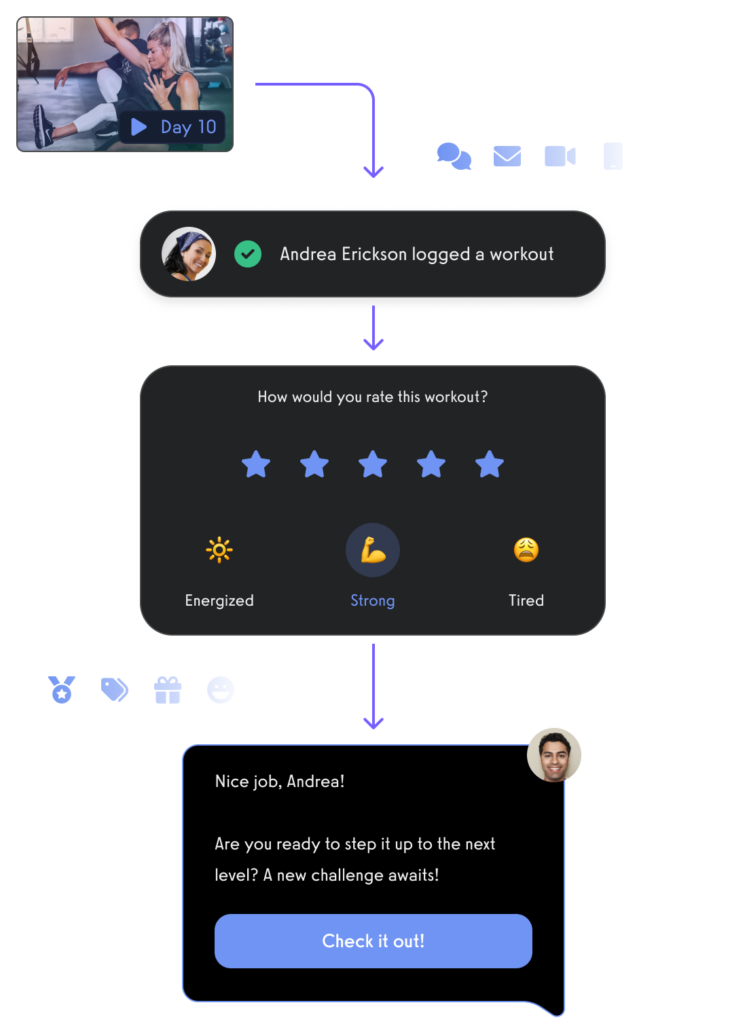
Manage leads with a fitness CRM.
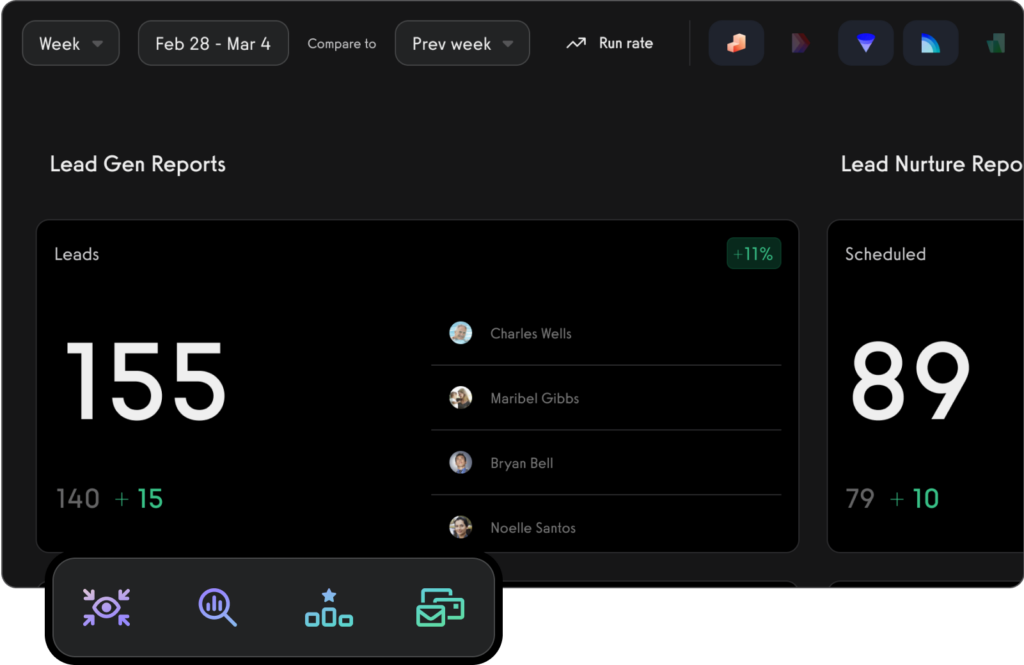
Create and send fitness assessments with ease.
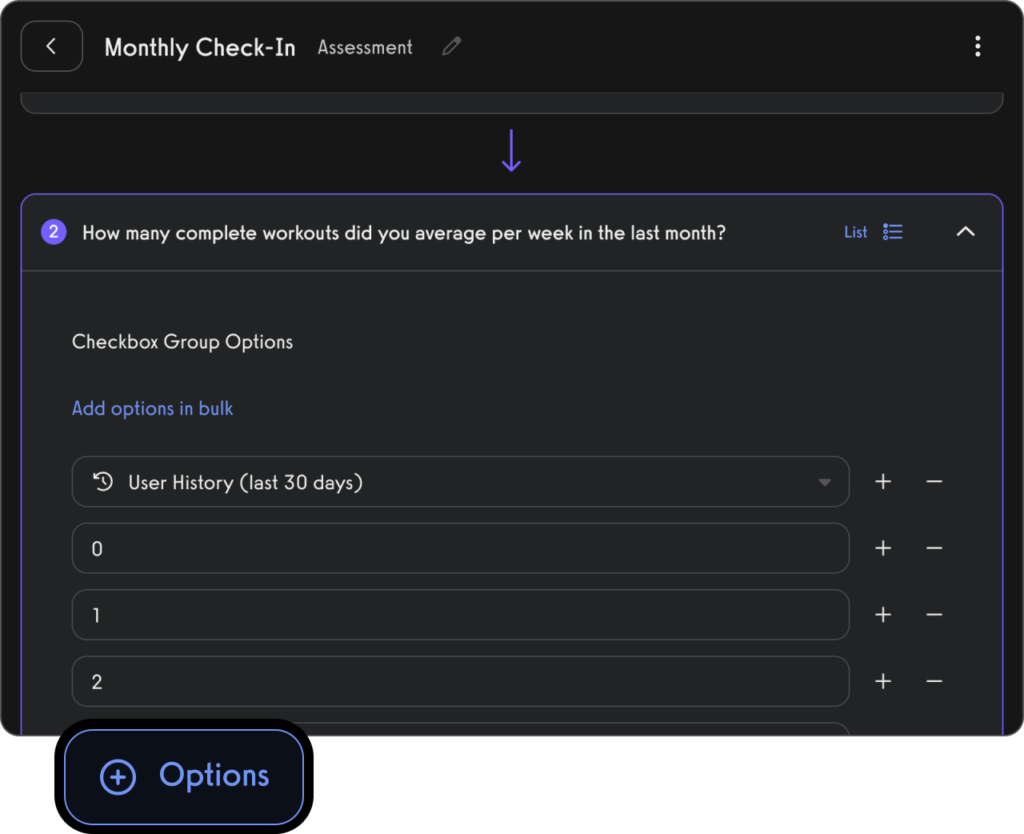
Use fitness habit tracking to inspire and motivate personal training clients (in-person and remote).

Use fitness progress photos to engage with clients.
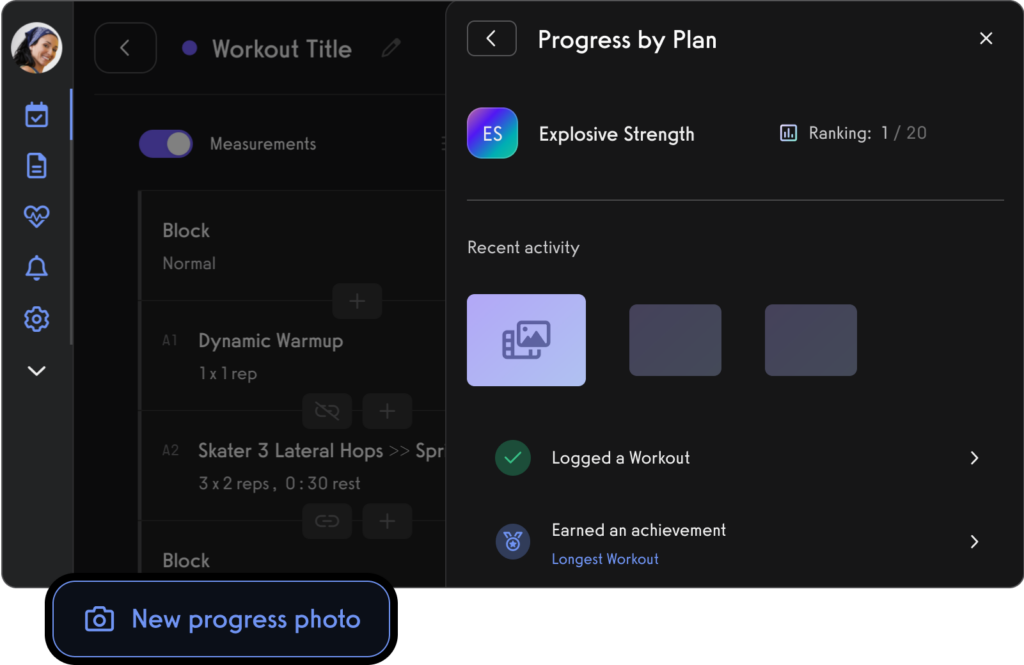
Use fitness leaderboards to track performance and inspire healthy competition.
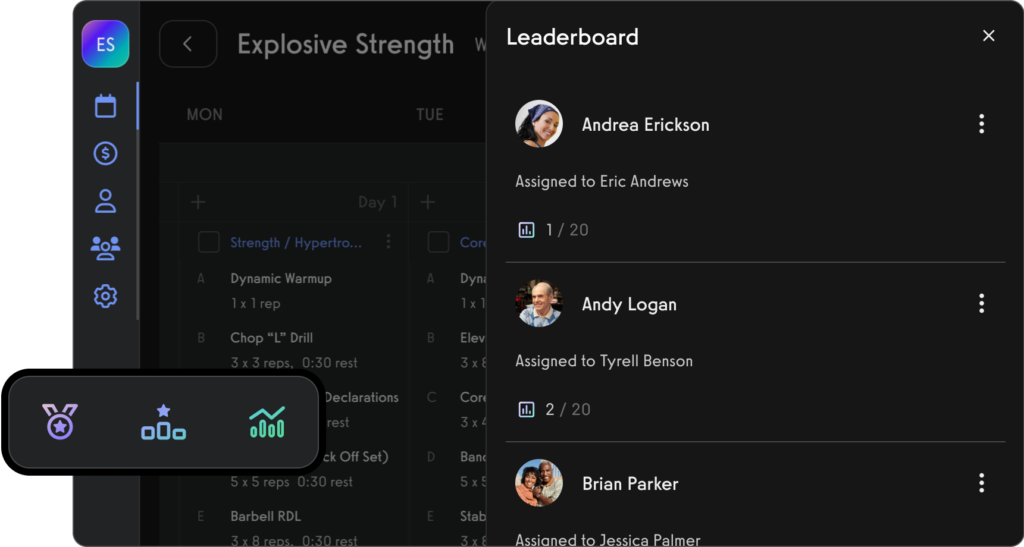
Use the exercise demonstration video library or create your own custom exercise demonstration videos.

Create workout plans for parents and dependents, teams and more.

Manage personal training clients with ease.

Book appointments for clients (Read More: Best Gym Booking Software)

Create classes and fitness groups

Manage fitness challenges (Read More: 100+ Fitness Challenge Ideas)
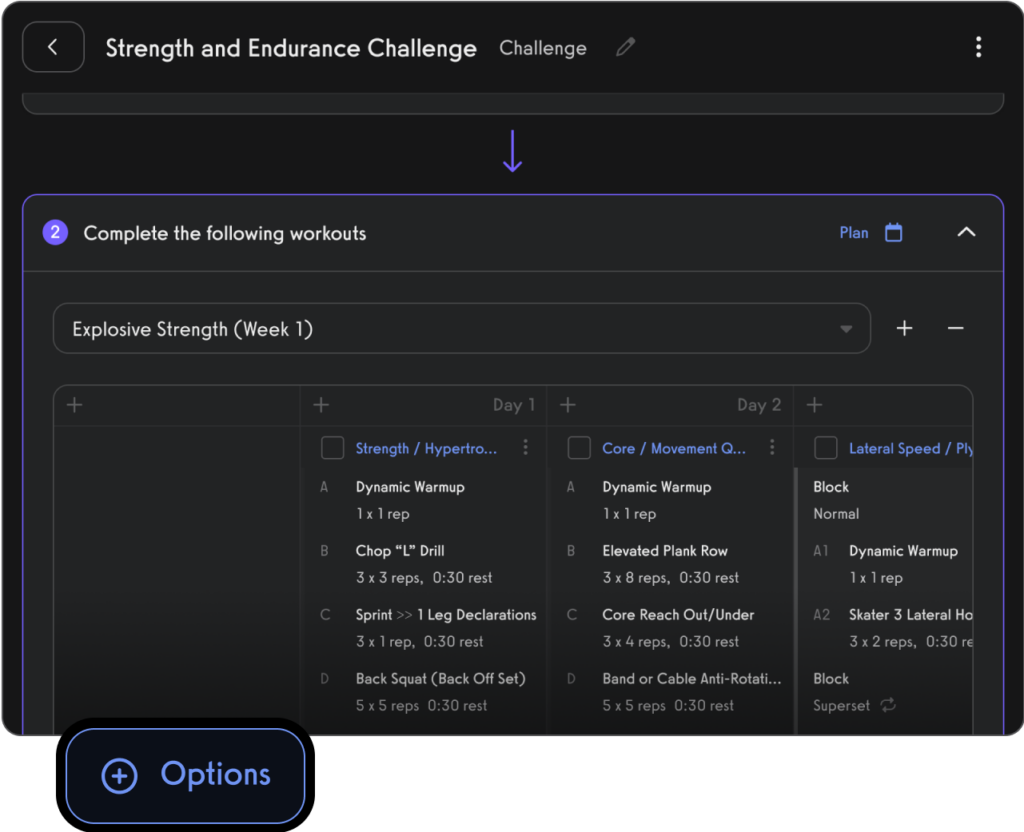
Process payments for open gym, classes, and personal training.

Communicate with gym members, athletes, team members, personal training clients, class members, parents, and dependents via SMS, email, and in-app push notification.
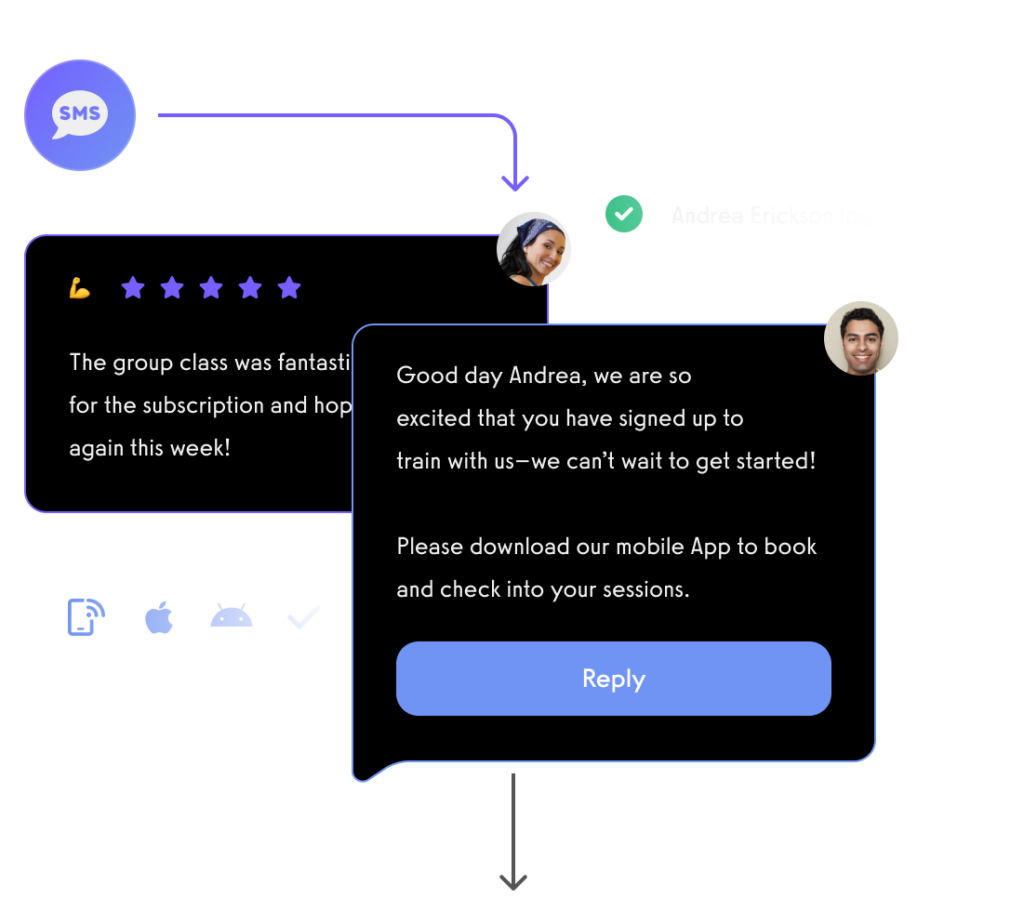
View performance over time, track personal records, and other fitness stats with performance reporting dashboards.
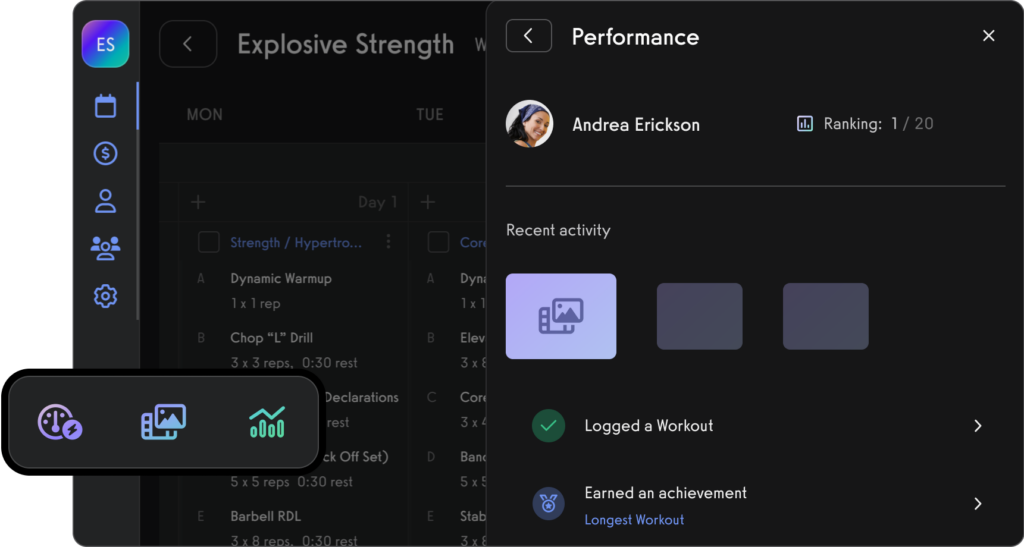
And of course, view all of your fitness business reports easily too.

All from your custom-branded fitness apps (Read More: Best Gym Mobile Fitness Apps Software)

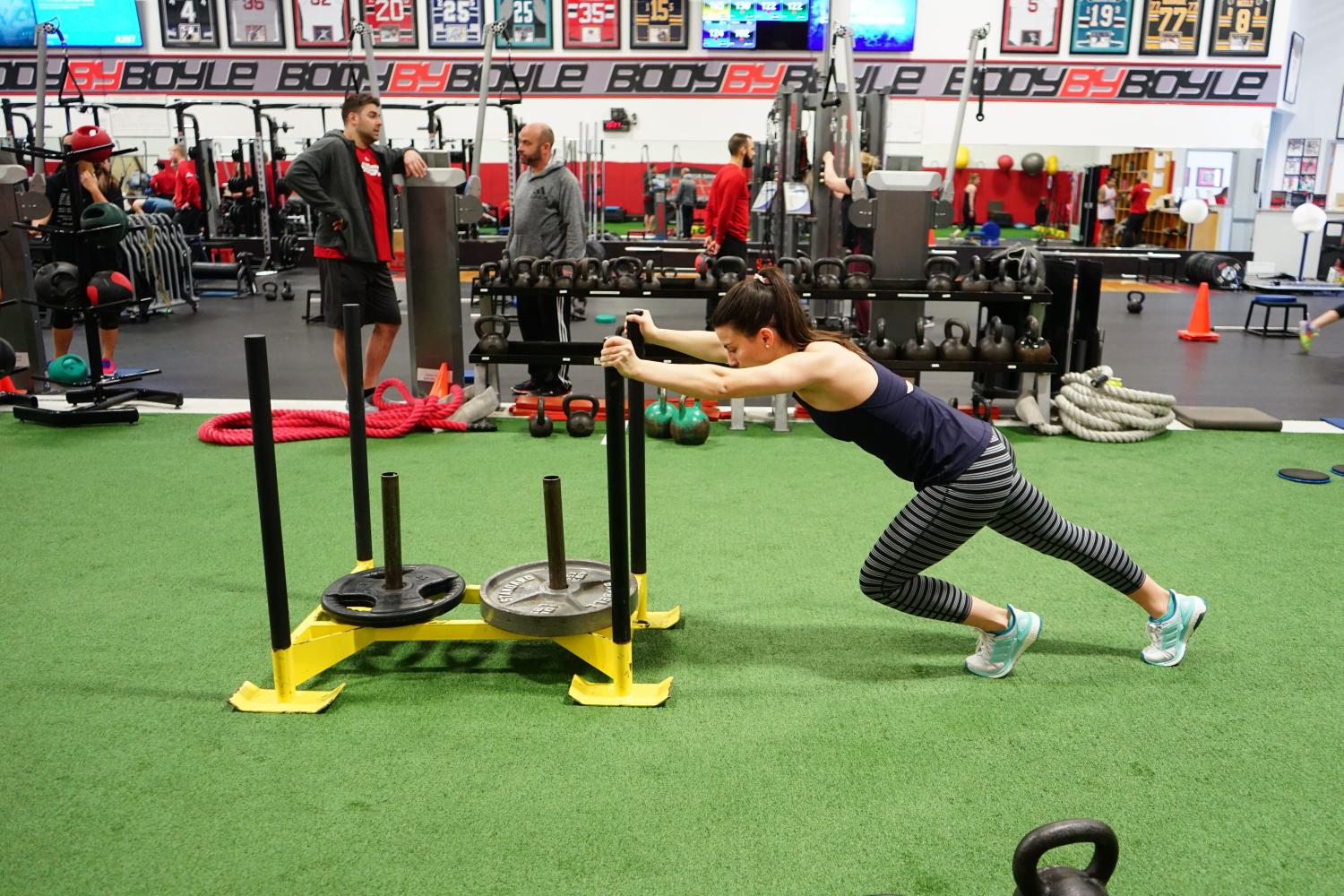
Want to learn how your fitness business can take it to the next level? Get a demo now!









